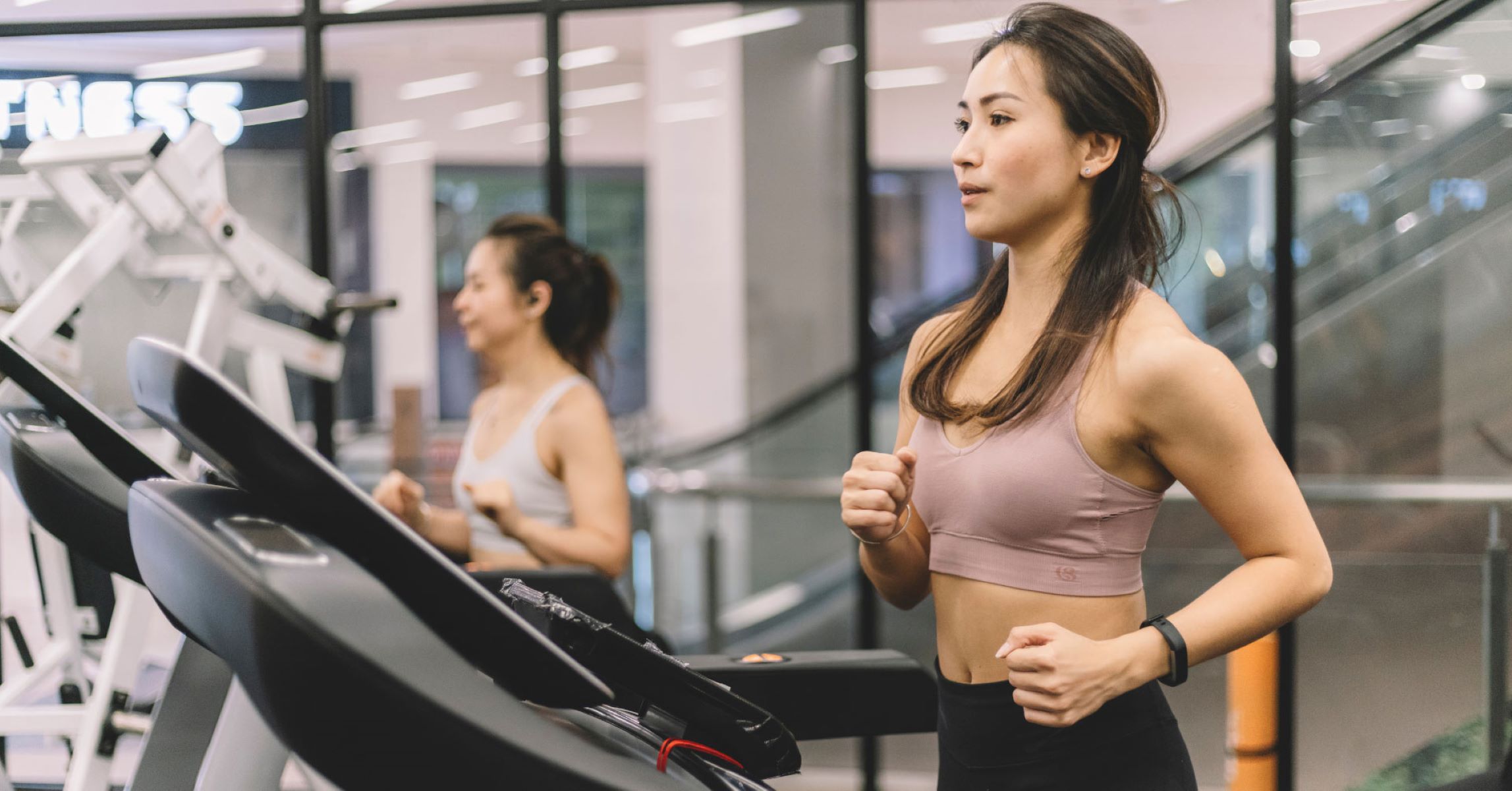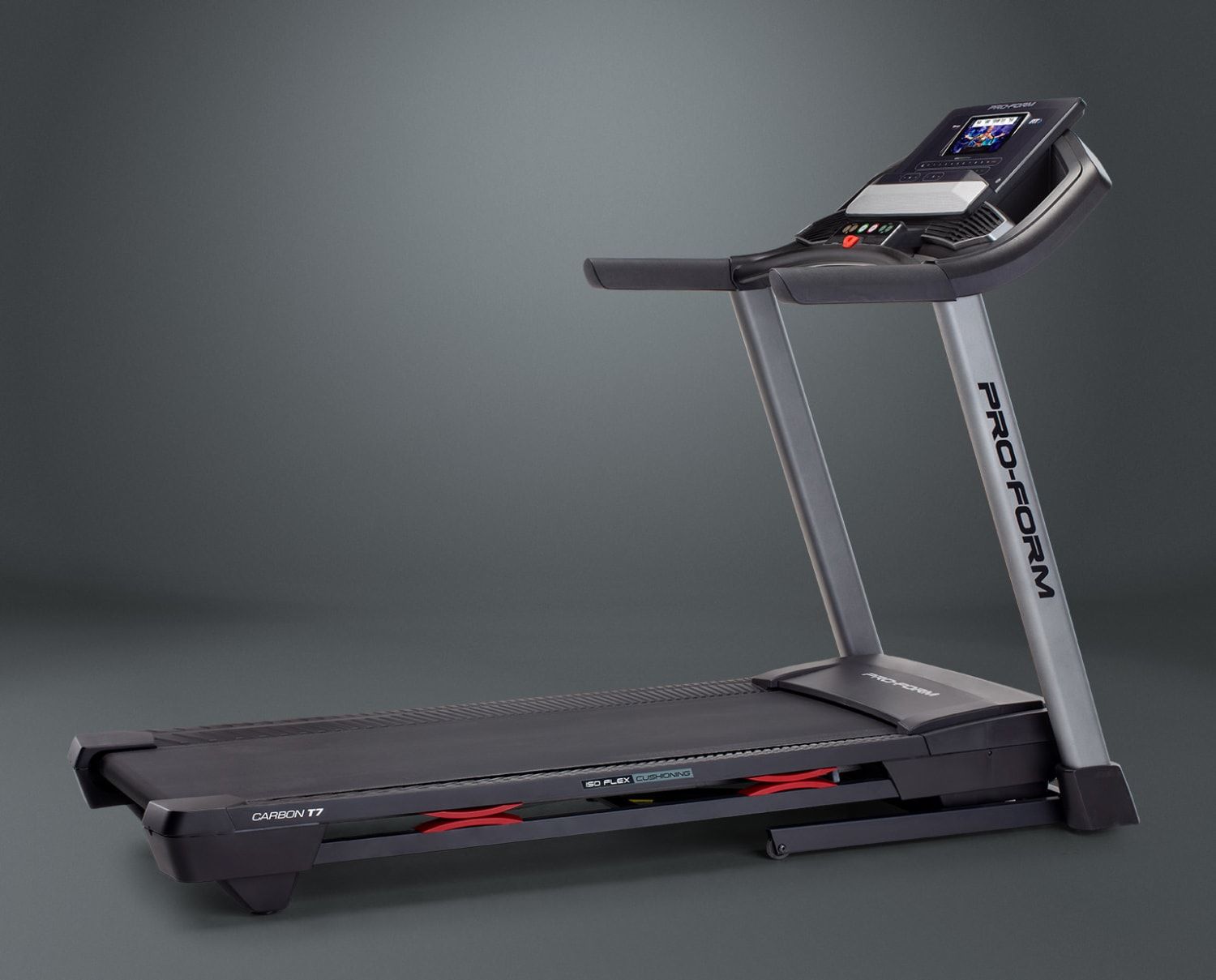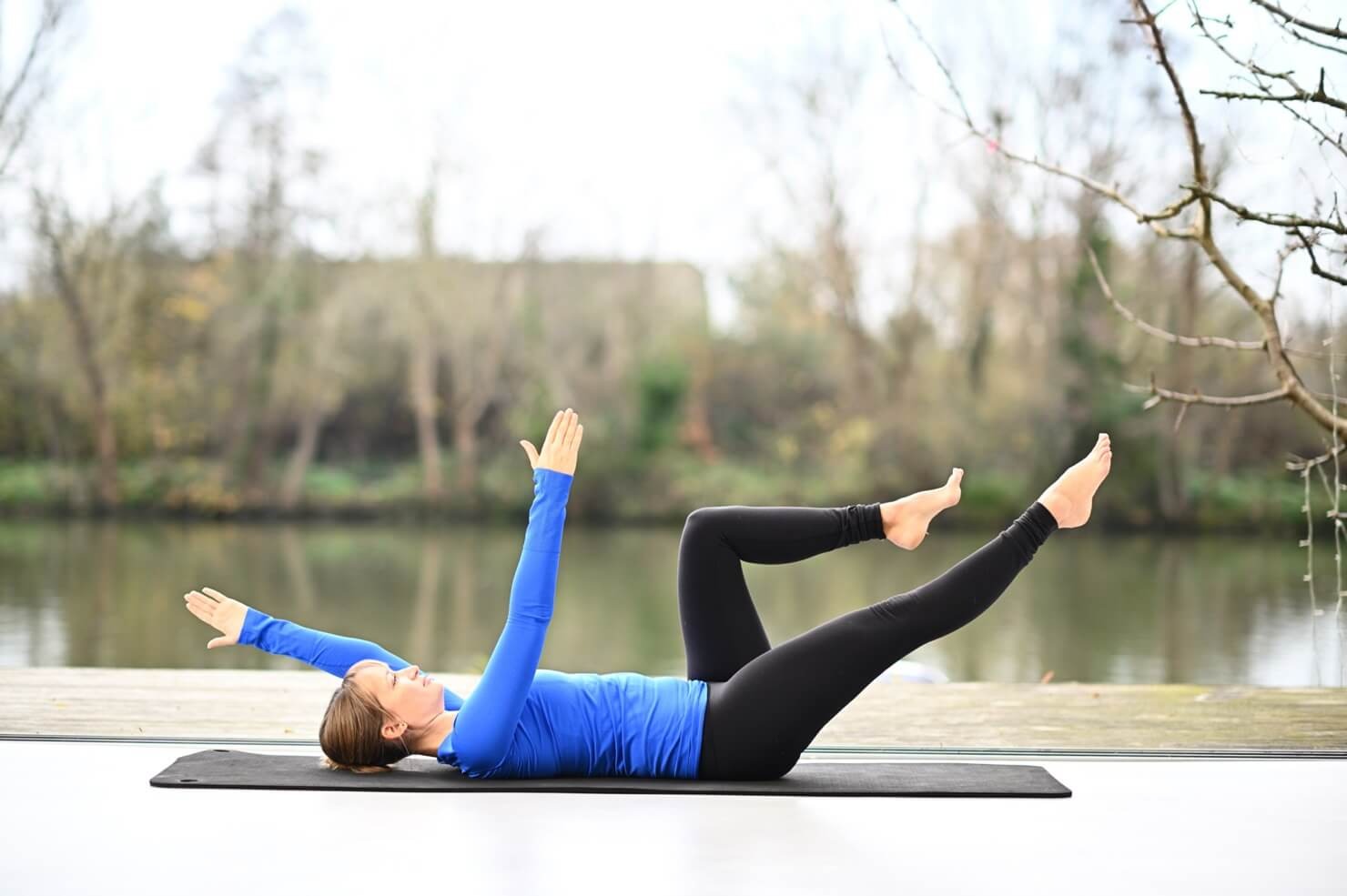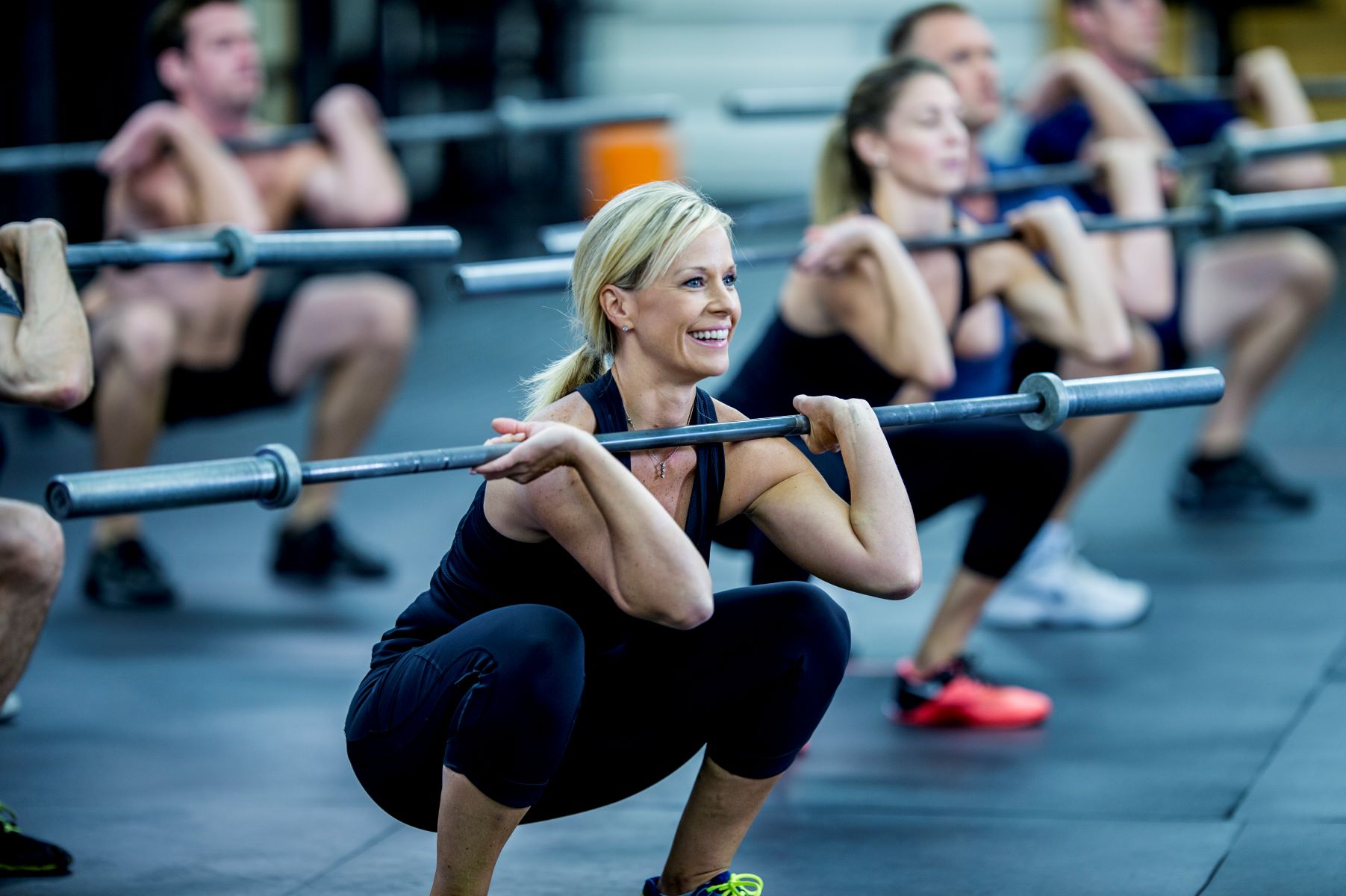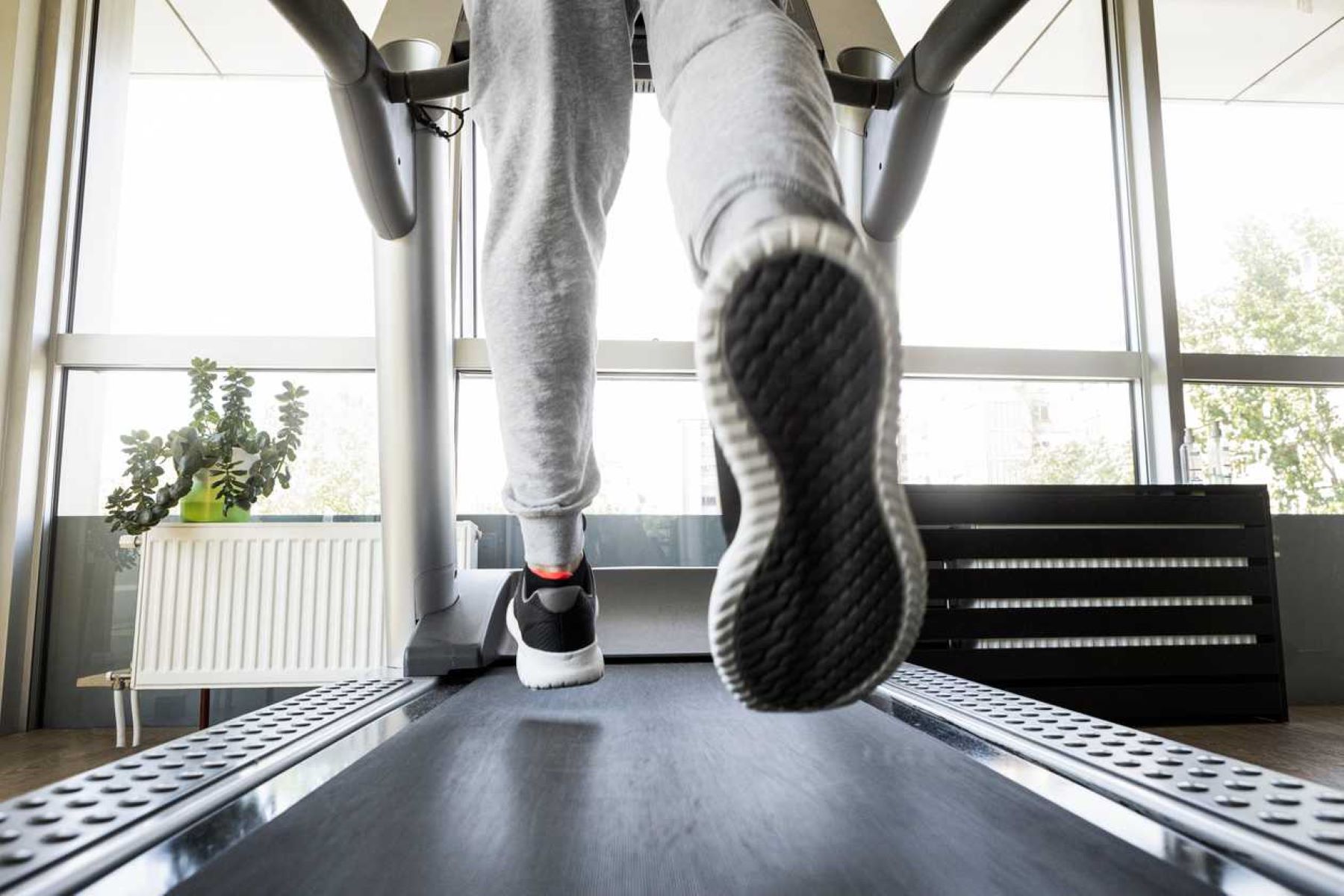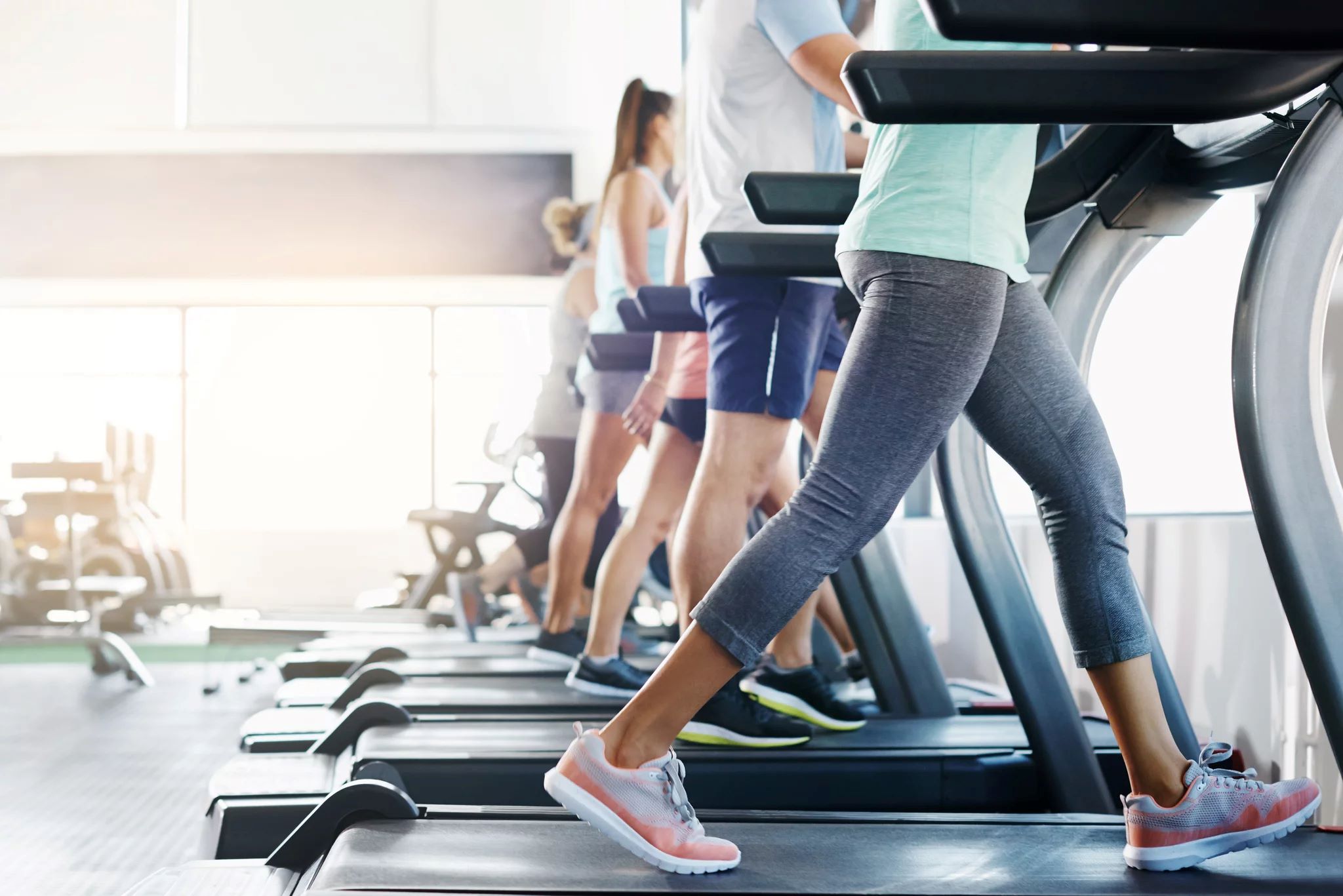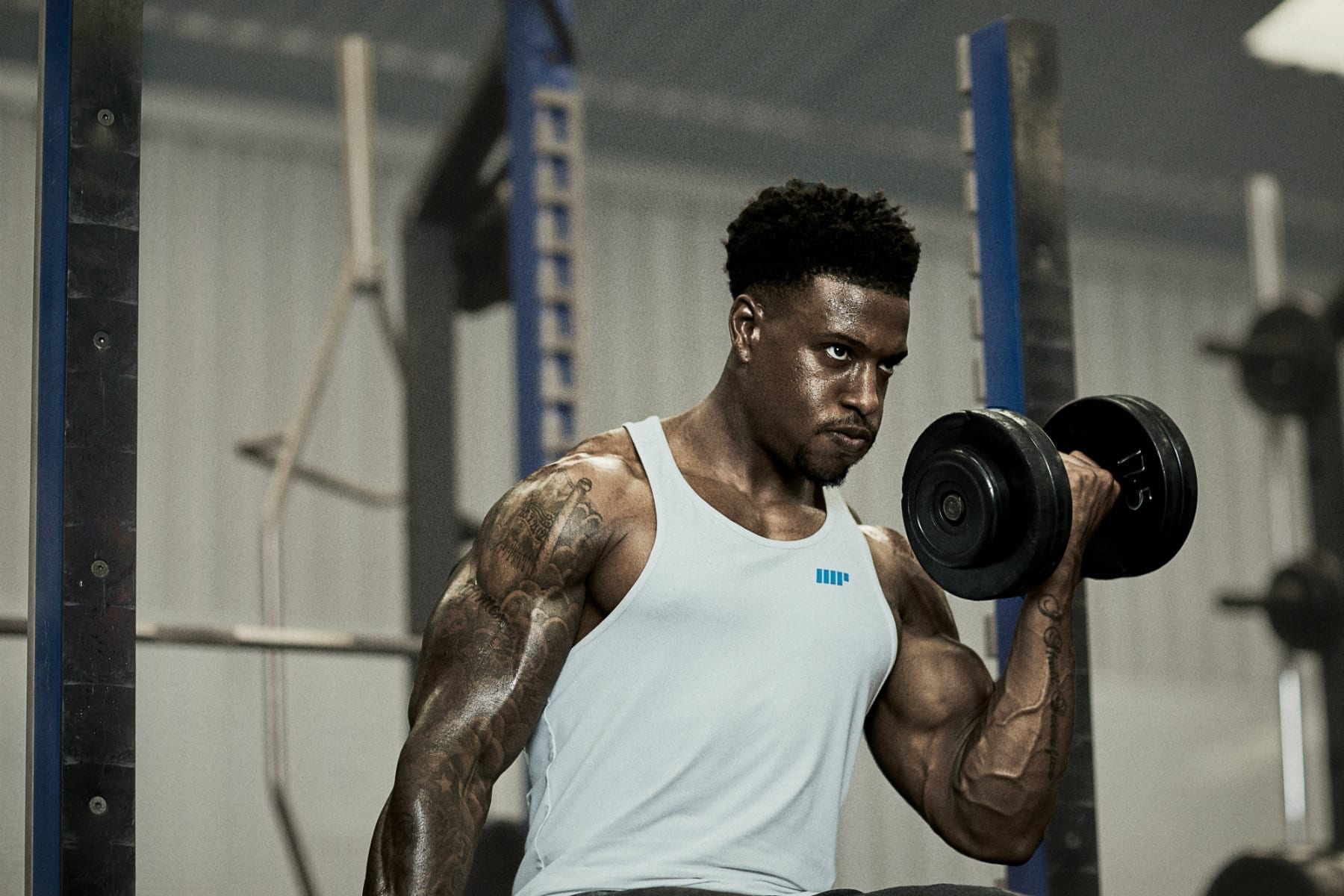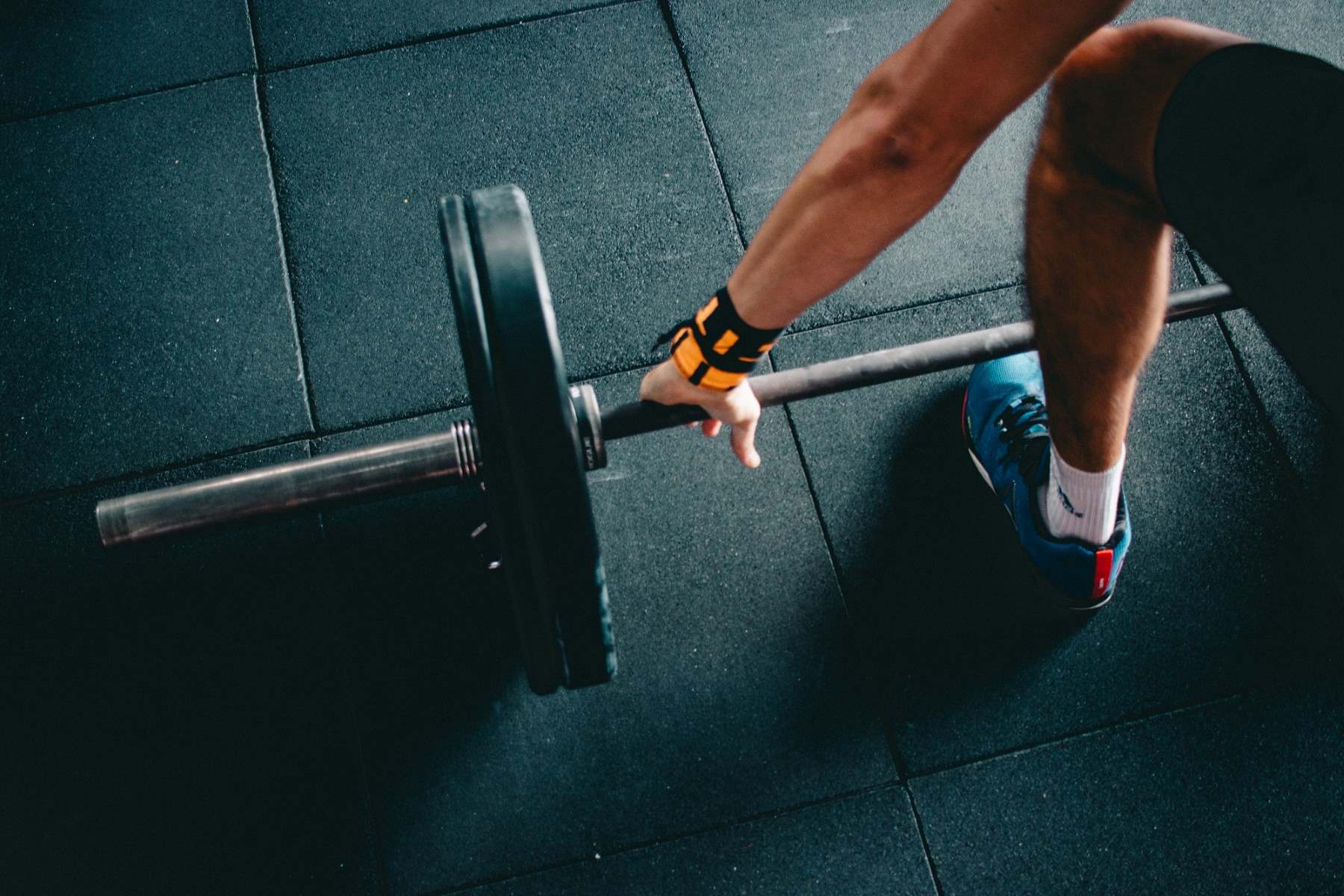

Featured
How To Workout Properly
Modified: August 19, 2023
Learn the essential tips and techniques for a proper workout with our featured guide. Enhance your fitness journey and achieve your goals effectively.
Introduction
In today’s fast-paced world, maintaining physical fitness is more important than ever. Regular exercise not only helps us stay fit and healthy but also improves our mental well-being. However, it is crucial to ensure that we are working out properly to avoid injuries and maximize the benefits.
Working out properly involves more than just going to the gym and randomly lifting weights or running on a treadmill. It requires a comprehensive understanding of the fundamentals of exercise and the correct techniques to prevent strain and injury. In this article, we will explore the key components of a proper workout routine and provide practical tips to help you get the most out of your exercise sessions.
From setting fitness goals to monitoring progress, each aspect plays a vital role in the effectiveness and safety of your workout. By following these guidelines, you can optimize your workouts and achieve your desired results, whether it’s building strength, losing weight, or improving overall fitness.
So, let’s dive into the world of fitness and discover how to work out properly to achieve a healthier, stronger, and more energetic you.
Setting Fitness Goals
Before diving into any workout routine, it is essential to set clear and realistic fitness goals. Setting goals provides direction, motivation, and a sense of purpose to your fitness journey. Without clear goals, it can be challenging to stay focused and track your progress.
When setting your fitness goals, consider what you want to achieve in terms of strength, endurance, flexibility, or weight loss. Be specific about the results you desire and set a timeline for when you want to achieve them. It is important to make these goals achievable and measurable so that you can track your progress along the way.
Remember, everyone’s goals and fitness levels are different, so your goals should be customized to your own personal aspirations and capabilities. It’s essential to challenge yourself, but also be realistic and listen to your body. Pushing yourself too hard or setting unrealistic goals can lead to burnout or injury.
In addition to the end goals, consider setting smaller, short-term goals to keep yourself motivated and celebrate your progress. These smaller milestones can help you stay focused and provide a sense of accomplishment along the way.
Setting fitness goals is not only about what you want to achieve but also why you want to achieve it. Understanding your motivations and the benefits you will gain from reaching your goals can help keep you motivated when faced with challenges or setbacks.
Once you have set your fitness goals, write them down and keep them visible as a constant reminder of what you are working towards. This will help you stay committed and provide motivation during those days when you may feel less motivated or challenged.
Remember, setting fitness goals is not a one-time event. Revisit and reassess your goals regularly to track your progress and make necessary adjustments. As you achieve your goals, set new ones to continue challenging yourself and maintaining your fitness journey.
Warm-Up
A proper warm-up is an essential part of any workout routine. It helps prepare your body for the physical demands of exercise by gradually increasing your heart rate, blood flow, and body temperature. Warming up properly can significantly reduce the risk of injury and improve overall performance.
Begin your warm-up session with some light cardio exercises such as walking, jogging, or cycling for approximately 5-10 minutes. This will increase your heart rate and warm up your muscles, preparing them for the upcoming workout. Engaging in dynamic stretches that target the major muscle groups can further enhance the warm-up process.
Dynamic stretches involve moving your body through a range of motion to improve flexibility and increase blood flow to the muscles. Examples of dynamic stretches include arm circles, leg swings, walking lunges, and hip rotations. Focus on stretches that target the specific muscles groups you will be working during your workout.
Additionally, it is crucial to include some mobility exercises to improve joint flexibility and range of motion. These can include shoulder rolls, knee circles, and spinal twists. Mobility exercises not only help prevent injuries but also enhance your overall movement and performance during your workout.
During the warm-up, it is important to listen to your body and gradually increase the intensity. Your warm-up should leave you feeling warm and slightly out of breath, but not fatigued. Avoid static stretching during the warm-up phase as it can actually decrease muscle elasticity and impede performance.
By incorporating a proper warm-up routine into your workout, you will not only prepare your body physically but also mentally. It gives you a chance to shift your focus from the external world to your exercise session, allowing you to be present and fully engaged.
Remember, a warm-up is not a time to rush or skip. It sets the foundation for an effective and safe workout. Dedicate the necessary time and attention to your warm-up routine and reap the benefits of improved performance and injury prevention.
Correct Form and Technique
One of the most important aspects of working out properly is using correct form and technique. Regardless of the type of exercise you are performing, using proper form ensures maximum efficiency, minimizes the risk of injury, and helps you achieve optimal results.
When lifting weights, focus on maintaining proper posture and alignment. Keep your back straight, shoulders pulled back and down, and engage your core muscles. Avoid arching your back or rounding your shoulders, as this can put unnecessary strain on your spine and lead to injury.
For exercises that involve bending or squatting, such as deadlifts or squats, make sure to hinge from your hips and maintain a neutral spine. Avoid letting your knees collapse inward and keep them aligned over your toes. Proper alignment and technique are crucial to avoid lower back or knee injuries.
When performing any exercise, it’s essential to move through the full range of motion for that exercise. This allows you to engage all the targeted muscles and achieve maximum benefit. Avoid shortening your range of motion or using momentum to complete the movement. Focus on slow and controlled movements, maintaining tension on the muscles throughout the exercise.
If you are unsure about proper form or technique, consider working with a certified personal trainer or fitness professional. They can guide you and provide feedback on your form, helping you make necessary adjustments for optimal performance and safety.
Remember, practicing correct form and technique is not just about appearance but also about functional movement and injury prevention. By using proper form, you will lessen the strain on your body and enhance the effectiveness of your workouts.
Lastly, don’t forget to listen to your body. If you feel any pain or discomfort during an exercise, stop immediately and assess your form. Pushing through pain or ignoring proper technique can lead to injury. Modify the exercise if needed or consult with a professional for guidance.
By focusing on correct form and technique, you will not only maximize the benefits of your workout but also develop a strong mind-muscle connection, allowing you to fully engage and activate the targeted muscle groups.
Choosing the Right Weight
Choosing the appropriate weight for your workouts is essential to ensure that you are challenging yourself enough without risking injury. Whether you are lifting weights or using resistance bands, selecting the right weight will help you make progress and achieve your fitness goals.
When deciding on the weight to use, you should aim for a weight that challenges you but still allows you to maintain proper form and technique throughout the exercise. It should be heavy enough to fatigue your muscles within the desired rep range, but not so heavy that you are compromising your form or risking injury.
If you are a beginner, start with lighter weights to focus on mastering the correct form and technique. Gradually increase the weight as you become more comfortable and confident with the exercises. This slow progression will help you build a solid foundation and prevent unnecessary strain or injury.
On the other hand, if you are more experienced and looking to increase muscle strength or size, you may need to use heavier weights to challenge your muscles. However, it is crucial to strike a balance and avoid lifting weights that are too heavy, as this can lead to improper form or excessive strain on your joints and muscles.
A general guideline is to choose a weight that allows you to perform the desired number of repetitions with good form, while feeling a moderate level of fatigue towards the end of the set. If you can easily complete all repetitions without feeling any challenge, it may be time to increase the weight. Conversely, if you are struggling to complete the repetitions with proper form, it may be a sign that the weight is too heavy and should be adjusted.
Remember, it’s better to start with a lighter weight and gradually increase as necessary, rather than risking injury or overexertion. Additionally, as you progress with your workouts, regular evaluation and adjustment of the weights you use is important for continued progress and avoiding plateaus.
Keep in mind that the right weight for you may be different from others, as it depends on your fitness level, goals, and individual capabilities. Avoid comparing yourself to others and focus on finding the weight that is appropriate for you and challenges your muscles effectively.
By choosing the right weight, you can optimize your workouts and ensure that you are working towards your fitness goals in a safe and effective manner.
Proper Breathing
Breathing may seem like a simple and innate activity, but practicing proper breathing techniques during your workouts can have a significant impact on your performance and overall experience. Correct breathing not only supports your body’s oxygen intake but also helps stabilize your core and enhance your focus.
When engaging in resistance training or cardiovascular exercises, it’s important to coordinate your breath with your movements. Inhale during the less strenuous or eccentric phase of the exercise, and exhale during the more challenging or concentric phase.
For example, during a squat, inhale as you lower down and exhale as you push back up. This technique helps stabilize your core and allows for better control of the movement. Proper breathing can also help prevent the buildup of tension in your muscles, which could hinder your performance or lead to injury.
In addition, focusing on deep belly breathing as opposed to shallow chest breathing can help ensure that your body receives an adequate supply of oxygen. Deep belly breathing involves inhaling deeply through your nose, allowing your belly to expand, and exhaling fully through your mouth.
Remember to avoid holding your breath while lifting weights or performing other exercises. This can increase internal pressure and potentially lead to dizziness or even blacking out. Instead, focus on maintaining a steady rhythm of inhaling and exhaling throughout your workouts.
Proper breathing not only supports your physical performance but also helps maintain mental focus and mindfulness during your workout. By paying attention to your breath, you can tune in to your body and stay present in the moment, enhancing your mind-muscle connection.
Finally, don’t forget to incorporate breathing exercises into your warm-up and cool-down routines. Deep breathing exercises, such as diaphragmatic breathing or alternate nostril breathing, can help calm the nervous system and promote relaxation before and after your workouts.
By practicing proper breathing techniques, you can improve your overall performance, prevent injuries, and enhance the mind-body connection during your workouts.
Rest and Recovery
Rest and recovery are often overlooked aspects of a proper workout routine, but they are crucial for achieving optimal results and preventing overtraining or burnout. Giving your body adequate time to recover allows your muscles to repair and rebuild, leading to improved strength, endurance, and overall fitness.
Rest days are essential to allow your body to recover from the physical stress of exercise. On rest days, you should avoid high-intensity workouts and instead focus on gentle activities or complete rest. This gives your muscles and connective tissues time to heal and adapt to the demands of the previous workouts.
In addition to rest days, it’s important to prioritize quality sleep as part of your recovery routine. During sleep, your body releases growth hormones and repairs damaged tissues. Aim for 7-9 hours of uninterrupted sleep per night to support your recovery process.
Active recovery, such as gentle stretching, yoga, or low-intensity activities like walking or swimming, can also help promote blood flow, reduce muscle soreness, and aid in the recovery process. Engaging in active recovery on rest days can help improve flexibility, reduce muscle stiffness, and enhance overall mobility.
Another essential component of rest and recovery is proper nutrition. Your body needs adequate nutrients to repair and rebuild muscle fibers. Ensure that you consume a balanced diet with sufficient protein, carbohydrates, healthy fats, and micronutrients to support your recovery and performance goals.
Hydration is equally important for recovery. Drink plenty of water before, during, and after your workouts to replenish lost fluids and electrolytes. Dehydration can prolong the recovery process and negatively impact your performance.
Finally, listening to your body and recognizing signs of fatigue or overtraining is crucial. Pushing through extreme fatigue or constant muscle soreness can lead to injuries and hinder your progress. If you are experiencing prolonged fatigue, persistent pain, or a lack of motivation, it may be a sign that you need to prioritize rest and recovery.
Remember, rest and recovery are not signs of weakness but essential components of a well-rounded workout routine. By allowing your body the time it needs to recover, you can not only prevent injuries but also improve performance and see better long-term results.
Stretching and Flexibility
Stretching and flexibility exercises are an integral part of a proper workout routine. They help improve joint range of motion, enhance muscle elasticity, and reduce the risk of injuries. Incorporating regular stretching into your workouts can improve overall flexibility and contribute to better posture and functional movement.
There are two main types of stretching: static stretching and dynamic stretching. Static stretching involves holding a stretch for a specific period, while dynamic stretching involves moving the muscles and joints through a full range of motion. Both types have their benefits and can be incorporated into your workout routine.
Static stretching should be performed at the end of your workout when your muscles are warm. Hold each stretch for 15-30 seconds, focusing on the muscle groups you worked during your session. Common static stretches include hamstring stretches, quadricep stretches, and shoulder stretches.
Dynamic stretching, on the other hand, should be done before your workout or as part of your warm-up routine. Dynamic stretches involve controlled movements that mimic the motions of the exercise you are about to perform. This type of stretching helps prepare your muscles and joints for the upcoming physical activity.
Besides traditional static and dynamic stretching, incorporating activities like yoga or Pilates into your routine can significantly improve flexibility and mobility. These practices focus on stretches and poses that target multiple muscle groups simultaneously, enhancing overall flexibility and body awareness.
It’s important to note that stretching should be done within your comfort range. You should feel a gentle pull or tension in the stretched muscle, but it should not be painful. Avoid bouncing or jerking while stretching, as this can cause injury or strain the muscle fibers.
Remember, consistency is key when it comes to stretching. Make it a habit to stretch regularly, ideally after each workout, to gradually improve your flexibility over time. Be patient, as it takes consistent effort and time to see significant improvements in flexibility.
Stretching and flexibility exercises not only help prepare your body for physical activity but also promote a sense of relaxation and mental well-being. Take the time to focus on your breathing and be present in the moment while performing your stretches, allowing your mind to unwind.
By incorporating stretching and flexibility exercises into your workout routine, you can improve your overall performance, reduce the risk of injuries, and enhance your overall body awareness and well-being.
Nutrition and Hydration
Nutrition and hydration play a vital role in supporting your workouts and optimizing your physical performance. Proper nutrition provides the fuel your body needs to sustain energy levels, repair muscles, and recover effectively. Similarly, staying well-hydrated ensures that your body functions optimally and helps regulate body temperature during exercise.
When it comes to nutrition, it’s important to fuel your body with a balanced diet that includes a variety of macronutrients and micronutrients. Carbohydrates are the body’s primary source of fuel, so incorporating complex carbohydrates like whole grains, fruits, and vegetables into your meals can provide sustained energy throughout your workouts.
Protein is essential for muscle repair and growth. Including lean sources of protein such as chicken, fish, tofu, beans, or Greek yogurt in your diet can help support muscle recovery and enhance overall muscle strength.
Fats are also important for providing energy and supporting various bodily functions. Opt for healthy fats like avocados, nuts, seeds, and olive oil to promote overall well-being.
In addition to macronutrients, be sure to focus on consuming an adequate amount of micronutrients, such as vitamins and minerals. Include a variety of colorful fruits and vegetables in your diet to ensure you meet your daily requirements.
Hydration is equally important for optimal performance. Water is essential for regulating body temperature, lubricating joints, and transporting nutrients to your cells. It is recommended to drink water before, during, and after your workouts to stay adequately hydrated.
The amount of water you need to consume depends on various factors such as the intensity and duration of your workout, environmental conditions, and your individual sweat rate. A good guideline is to aim for at least 8 cups (64 ounces) of water per day, and increase intake during intense exercise or hot weather.
Timing is also crucial when it comes to nutrition and hydration. It’s recommended to have a balanced meal or snack consisting of carbohydrates and protein before your workout to provide energy and support muscle recovery. After your workout, replenish your body with a combination of carbohydrates and protein to promote muscle repair and replenish glycogen stores.
While it’s important to focus on proper nutrition and hydration, it’s also essential to listen to your body’s cues. Pay attention to your hunger and fullness signals and adjust your intake accordingly. Individual nutritional needs can vary, so it’s important to find what works best for you through trial and error.
By prioritizing nutrition and hydration and fueling your body properly, you can optimize your workouts, improve your overall performance, enhance recovery, and support your long-term health and fitness goals.
Monitoring Progress
Monitoring and tracking your progress is an essential part of a proper workout routine. It allows you to assess your performance, set new goals, and make necessary adjustments to your workouts. By monitoring your progress, you can stay motivated, track your improvements, and celebrate your achievements along the way.
There are various ways to monitor your progress, depending on your fitness goals and preferences. Keeping a workout journal or using a fitness tracking app can be effective tools to track your workouts, record the exercises performed, weights used, sets and reps completed, and the duration of your sessions.
Tracking your workouts not only helps you stay organized but also enables you to see your progress over time. You can easily identify areas where you have improved and areas that may require more attention. It can be incredibly motivating to see your strength, endurance, or overall fitness increase as you progress in your fitness journey.
In addition to tracking your workouts, consider taking regular measurements of your body. This includes measurements of your weight, body fat percentage, waist circumference, or other specific body measurements. These measurements can provide valuable insight into changes in your body composition throughout your fitness journey.
Progress photos can also be a helpful visual tool to track changes in your physique. Take photos at the beginning of your journey and compare them periodically to see how your body has transformed. Seeing noticeable differences in your photos can further motivate and inspire you to continue pushing towards your goals.
Another effective way to monitor progress is by regularly assessing your performance. Set specific fitness-related goals, such as running a faster mile, lifting heavier weights, or performing more repetitions of an exercise. By periodically testing and retesting these goals, you can gauge your improvement and adjust your workouts accordingly.
Lastly, listen to your body and pay attention to how you feel during and after your workouts. Notice any improvements in your energy levels, endurance, strength, or overall fitness. Being attuned to these subtle changes can provide valuable feedback on your progress and indicate areas where you may need to adjust your workout routine or focus on specific aspects of your training.
Remember, progress is not always linear, and it can vary from person to person. Celebrate both small and significant milestones along your fitness journey. Stay focused, be patient, and enjoy the process of continual improvement.
By monitoring your progress, you can stay motivated, track your improvements, and make necessary adjustments to your workout routine. This will ultimately lead you closer to achieving your fitness goals and maintaining a healthy, active lifestyle.
Conclusion
Congratulations! You have now learned the key components of working out properly to maximize your results and minimize the risk of injury. By setting clear fitness goals, warming up properly, using correct form and technique, choosing the right weight, practicing proper breathing, prioritizing rest and recovery, incorporating stretching and flexibility exercises, and focusing on nutrition and hydration, you are well-equipped to embark on a successful fitness journey.
Remember to monitor your progress along the way, using tools such as workout journals, tracking apps, measurements, progress photos, and performance assessments. Celebrate your achievements and make necessary adjustments to continue pushing towards your goals.
Always listen to your body and respect its limits. Push yourself, but also know when to take rest days and prioritize recovery. Proper nutrition and hydration will fuel your workouts and support your overall health and well-being.
Working out properly is not just about physical gains. It’s about investing in your long-term health, boosting your confidence, reducing stress, and enhancing your overall quality of life. Embrace the journey and remember that consistency and dedication are key.
So, lace up your shoes, grab your water bottle, and embark on your fitness adventure with confidence. With the knowledge and understanding of how to work out properly, the possibilities for achieving your fitness goals are endless!
